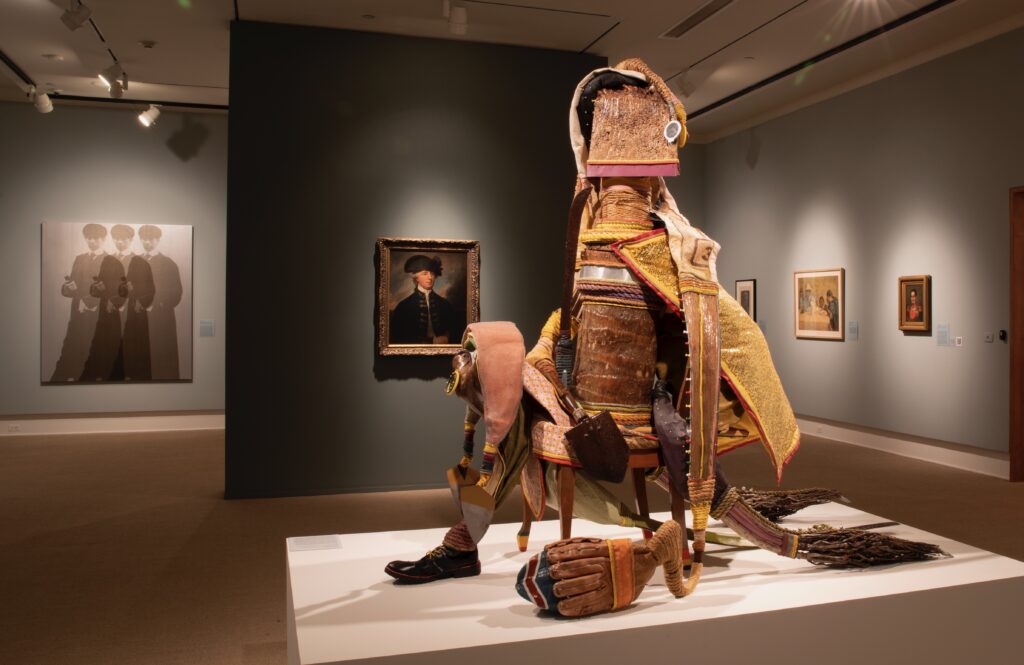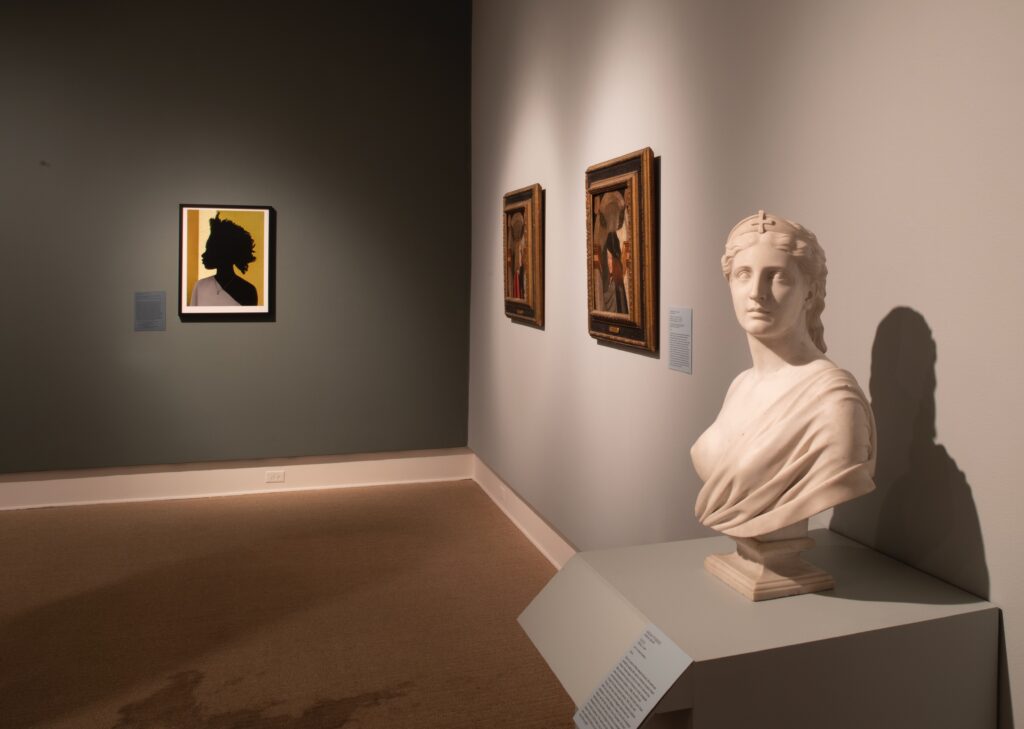by Jessica Giles | July 2, 2021
A Double Take on Portraiture at the Cornell Fine Arts Museum
In this Winter Park gallery, faces and figures come together to challenge traditional perceptions of portraiture across multiple art mediums


When most people think “portraiture,” the mind automatically conjures images of the Mona Lisa or the two farmers from American Gothic, but thanks to a new exhibit at the Cornell Fine Arts Museum in Winter Park, aesthetes can discover that portraiture is more than just a stoic gaze. In this gallery, visitors are challenged to look beyond the faces in the frames to discover that things are rarely as simple as they seem.
Showing from now until August 29, Multiple Voices/Multiple Stories brings together figural representations from the museum’s collection into one cohesive exhibit that turns the tradition of portraiture on its head. Inside the gallery, artworks from the late 15th century mingle with portraits as recent as 2019 to offer a nuanced conversation about historical events and the relationship between artist and sitter. At first glance, the conglomeration of artwork may seem random, but examine them closely and visitors will find that each piece reveals something about another.
How many museums do we go [to] and they have rooms and rooms with marble portraits of white European women? We need to see more of ourselves represented in museums and exhibitions.
— Gisela Carbonell
One of the most prominent pieces in the exhibit doesn’t even appear to be a portrait at all, but rather an arrangement of household items—a shoe, a baseball glove, a sequin cape. Step back a few paces, and the pile of seemingly mundane objects becomes a figure on horseback. The sculpture, titled Vencedor: 1797 (Victorious: 1797), is artist Daniel Lind-Ramos’ ode to Black Puerto Rican militias that battled the British Navy in 1797. What’s more, the random found objects that make up the figure aren’t random at all, but rather, hand-selected by Lind-Ramos from his hometown of Loíza, Puerto Rico. Just over the militia man’s shoulder, museum-goers will spot a more conventional take on this historical battle: Portrait of an English Naval Officer circa 1780 by George Romney. Here, the naval officer sits for a traditional portrait dressed in his naval uniform. It’s a piece intended to celebrate the officer’s distinguished status and military achievements, but when viewed alongside Vencedor: 1797, it can spark conversations about who is often given the mic in history.


“It’s one historical event seen or told from two very different perspectives: from the colonizer’s view and from those who were being colonized,” says Gisela Carbonell, curator of the Cornell Fine Arts Museum. “That kind of dialogue that’s happening between those two works I think is extremely rich.”
One of the most recognizable portraits that hangs in Multiple Voices/Multiple Stories is a striking profile of inaugural Youth Poet Laureate Amanda Gorman. On its own, the photograph by Shawn Theodore is a testament to Gorman’s work as an activist, poet and role model for those with unshakeable ambition, but coupled with the nearby marble sculpture Faith, Theodore’s photograph takes on a whole new meaning.
Hiram Powers’ 1867 portrait bust Faith embodies the neoclassical work he was known for and exalts a particular type of beauty. One of Powers’ most memorable characteristics was his desire to only use pure white marble, devoid of imperfections, to represent the “perfect” human body. This aggrandizement of white, Eurocentric features as the standard for beauty is challenged by Gorman’s nearby portrait and prompts viewers to consider their own learned standards of beauty.
“How many museums do we go [to] and they have rooms and rooms with marble portraits of white European women? We need to see more of ourselves represented in museums and exhibitions,” Carbonell says.


Standing alone, each work curated for this exhibit tells a story about a particular person or place, but when paired with other works of a similar topic from a differing time period, a multilayered message emerges.
Carbonell will peel back some of these layers during a virtual tour of the exhibit on Friday, July 16 at 11 a.m. and again in Spanish on Tuesday, July 27 at 6 p.m. Art aficionados also have the opportunity to wander the gallery virtually via the museum’s 360-degree exhibit tours online.
Those who visit the Winter Park museum in person can challenge themselves to find these common threads between works with a self-guided look or they can turn to the audio guide to shape the experience. Carbonell and her curatorial fellow, Morgan Snoap, grouped the pieces into themes such as personal connection or colonialism to help museum-goers notice important juxtapositions between portraits. Visitors can scan the QR codes throughout the gallery to hear commentary on each of these themes or linger a little longer in front of each piece to read the notes.
The exhibit is sort of a choose-your-own-adventure experience in that onlookers get to decide how deep they engage with the exhibit, whether it’s taking each piece of art at face value or searching for context in the contrast. Whatever the level of interactivity, the exhibit aims to impress the idea that portraiture is more than just the Mona Lisa.





